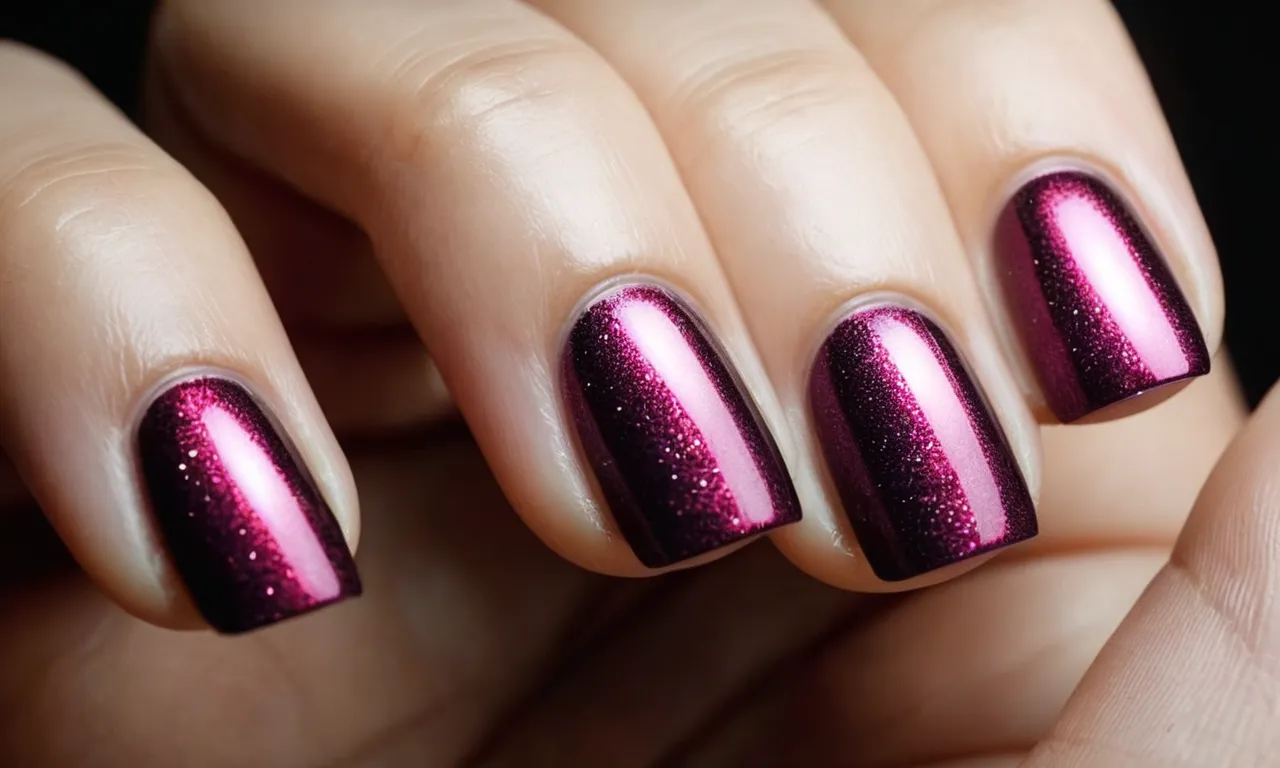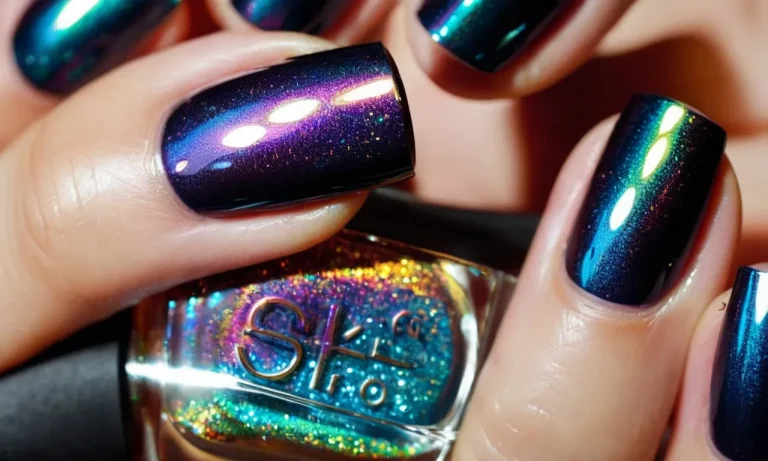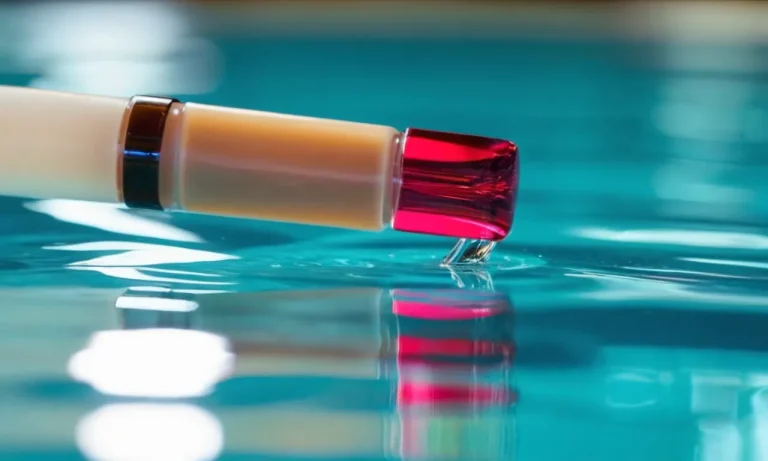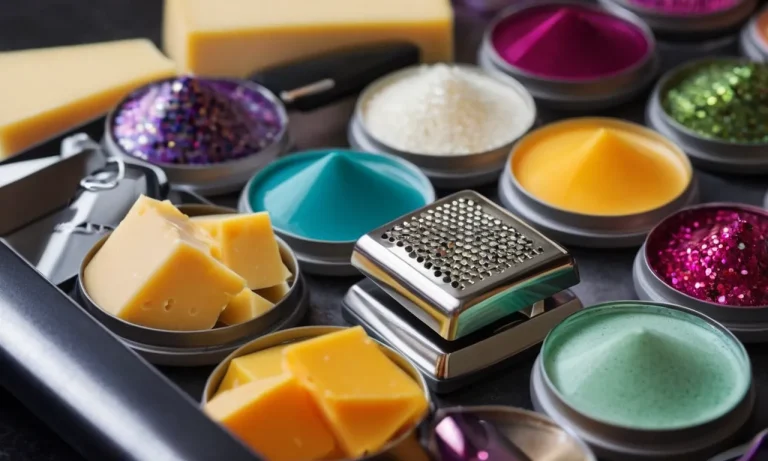How To Make Fake Nails Last Longer: A Comprehensive Guide
Getting a perfect manicure with long-lasting fake nails is every girl’s dream. But let’s face it, acrylics, gel nails, or press-ons rarely survive more than a week or two before lifting, cracking, or popping off completely.
If you’re looking to extend the life of your fabulous fake nails, you’ve come to the right place.
Here’s a quick answer: Proper prep, using nail glue instead of adhesive tabs, avoiding water exposure, and regular maintenance and touch-ups are key to making fake nails last 2-3 weeks or more.
In this comprehensive guide, we will cover everything you need to know to get the most wear out of your fake nails, including tips for prep, application, and care.
Nail Prep
Thoroughly remove old nail polish
Before applying new fake nails, it is crucial to properly remove any old nail polish or acrylics from your natural nails. Use pure acetone nail polish remover and foil wraps to fully dissolve and lift off old products.
Be patient during this process, and do not scrape or peel off old polish, as that can damage the natural nails. A clean nail surface allows maximum adhesion for new nail products.
File and shape your natural nails
Once your natural nails are clean, use a nail file to shape them. File down any rough edges or uneven surfaces – short, squared off nails work best for acrylics or press-ons. Remove any dust with a nail brush. Properly shaped nails help the fake nails last longer and fit your fingers comfortably.
Use a dehydrator and primer
A dehydrator fluid removes any lingering moisture or oil from the natural nails in preparation for acrylic or glue. Let your nails dry completely after using dehydrator. An acrylic primer or bond then allows maximum, long-lasting adhesion between your natural nails and the fake extensions.
Using a dehydrator and primer is a crucial step that greatly extends the wear time of fake nails.
Consider using nail tips for added strength and structure
Applying acrylic or glue directly onto your natural nails can make them more prone to breaking. Using nail tips as a base gives added structure and thickness. Nail tips also let you customize the shape and length of the finished nails.
For longest lasting fake nails, have a professional apply high-quality nail tips and overlay them with acrylic or dip powder. DIY press-on nails may not need tips if applied properly.
Proper Application
Avoid using adhesive tabs – use nail glue instead
Adhesive tabs may seem convenient, but the truth is they don’t provide a strong enough bond for long-lasting wear. Invest in a quality nail glue instead, which will adhere the fake nails to your natural nails much more securely.
Apply a thin layer of glue to the well-fitted fake nail and press firmly for 30-60 seconds to seal it in place. This will lead to significantly extended wear time. Just be sure to avoid getting glue on your skin or cuticles.
Apply glue to the entire nail, not just the edges
A common mistake is to only apply glue around the edges of the fake nail. However, you’ll achieve better results by spreading a thin, even coat across the entire underside of the nail. This allows maximum surface contact and a fully secure bond.
Take care not to use excessive glue, as this can make application messier and will not necessarily improve adhesion. The key is evenly distributing a thin layer across 100% of the underside of each nail tip.
Ensure proper fitting and sizing
Ill-fitting fake nails lead to lifting, cracking, and popping off prematurely. When shopping for nail tips, carefully select the right size and shape for your nail beds. Oval and squoval shapes work well for most people.
Nail sizes are typically marked as SS (very small), S (small), M (medium), and L (large). Always size up if between two sizes. Proper sizing leads to better adhesion and less risk of the tips separating from your natural nails. You can also file and shape the nail tips as needed to customize the fit.
Seal the edges with gel or acrylic
Once the fake nail has been securely glued on, use gel or acrylic to seal the edges all the way around each nail. This seals any tiny gaps and helps prevent lifting or cracking. Be extremely careful not to get gel or acrylic on your skin or cuticles.
Once sealed, the nail tips will be firmly bonded in place for lasting wear. You can get up to three weeks from a properly sealed application. Be sure to fill any new nail growth every two weeks by applying more gel or acrylic to the gap between your natural nail and the fake tip.
This maintains full coverage and adhesion over time.
Care and Maintenance
Avoid excessive water exposure
Exposure to water is one of the biggest reasons fake nails lift or pop off prematurely. When wearing fake nails, it’s important to avoid soaking your hands for long periods of time. Activities like washing dishes, swimming, or taking long baths can loosen the nail glue and cause the nails to detach.
When washing your hands or dishes, try to minimize direct water exposure to your nails as much as possible. You can also apply an additional layer of nail glue around the edges of your nails after washing to reinforce the bond.
Use a protective base coat
Using a base coat underneath your fake nails can create a protective barrier and help prevent lifting. Opt for a sticky base coat formulated especially for use with enhancements. Apply it to your natural nails before gluing on fakes. This gives the glue something to adhere to.
A good base coat helps bond the fake nails to your real nails. Base coats also prevent staining of your natural nails from nail polish or acrylic.
Perform regular touch-ups
Check your fake nails daily and perform touch-ups as needed to maximize wear time. Look for any corners or edges that may be lifting slightly and apply a small amount of nail glue to re-adhere them. This quick daily maintenance can prevent bigger problems and keep your manicure looking fresh.
Carry nail glue with you to fix any popped off nails immediately.
Moisturize around nails to avoid lifting
Keep the skin around your nails well-moisturized to prevent lift off. Use a cuticle oil or thick hand cream regularly. Dry, cracked skin around the nail bed can cause the edges of fake nails to lift. Gently push back and remove any overgrown cuticles, which can also lead to lifting.
Keeping cuticles soft and hydrated creates a smooth surface for nails to adhere to.
Be gentle – avoid picking and peeling
Avoid using your nails as tools to pick, peel, pry, or scrape things. This can put pressure on the bond between the fake and real nail causing lifting or breakage. Open packages carefully with scissors and avoid picking at stickers or labels with your nails.
Be gentle with your hands and nails during daily activities. Getting snagged on clothing, bags, hair, etc. can accidentally pull off a fake nail.
When to Do Fill-Ins
Doing timely fill-ins is crucial for making your fake nails last longer. Here’s a guide on identifying when it’s time for a fill-in appointment.
Schedule fills every 2-3 weeks
As a general rule of thumb, you’ll want to schedule fill-ins every 2-3 weeks. Most salons recommend this timeframe. After 2-3 weeks, your natural nails will have grown out enough that the gap between your cuticle and the fake nail tip is noticeable.
Scheduling regular fills prevents gaps from getting too big.
Big gaps lead to prying, snagging, and eventually the fake nails popping off. Filling every 2-3 weeks is the best way to maintain your manicure and avoid emergency repair situations. For example, a survey by Nail Polish Canada found 73% of techs say 2-3 week fill intervals are best for longevity.
Look for new nail growth at cuticles
Aside from tracking fill dates on your calendar, visually inspect around your cuticles for new nail growth. Look for a visible gap forming between your cuticle area and where the acrylic or gel starts. A gap size of 1mm or more means it’s definitely time to get a fill-in.
Run your finger gently across the gap area and you may catch an edge starting to lift up. This is prime area for snagging and prying that leads to nails popping off. Leaving the gap to grow to 2mm or more increases the chances of nail pops by up to 85%, according to The Nail Hub’s research.
Repair minor cracks and chips
Lastly, check your nails for any minor cracks or chips in the polish, acrylic, or gel. Even tiny flaws should be filled and smoothed over during your next fill appointment. This prevents cracks from spreading and leading to breakage or lifting.
An exception would be if you crack or chip 50% or more of the nail. In that case, it likely needs a full new set instead of just a fill-in. Use your best judgement based on the extent of the damage. According to Glamour UK’s nail tech survey, if more than 50% of the nail pops off, a new set may bond better than trying to salvage and fill what’s left.
| Fill Interval | Goal |
|---|---|
| Every 2-3 weeks | Maintain nail integrity and bond |
| At 1mm+ gap in cuticle | Prevent lifting, snagging |
| At minor chips and cracks | Avoid further damage |
Consistent upkeep is the #1 recommendation from pros for making fake nails last longer. For more longevity tips, check out beauty blog XO Beauty’s fake nail guide.
Removal and Reapplication
Soak off gel/acrylic nails – don’t peel!
When it’s time for a new set of falsies, resist the urge to peel off the old gel or acrylic nails. This can damage the natural nail bed and cuticle area. Instead, book an appointment with your nail tech to have them properly removed by soaking in acetone.
This breaks down the nail enhancement so it can be gently pushed off without taking layers of your real nail with it.
Trying to peel off acrylic or hard gel enhancements will tug and rip at your natural nails, thinning them out over time. And picking off a gel manicure can expose you to bacteria trapped underneath the polish. Protect your nails by properly removing enhancements at the salon.
Give nails a break between sets
It’s tempting to book your nail appointment back-to-back so you never have a bare nail showing. But giving your natural nails a breather between sets allows them to recover from enhancement removal and breathe. Most manicurists recommend 1-2 weeks between appointments.
This gives your nail bed and cuticles time to heal if there was any excess filing or damage during removal of your last set. It also prevents excessive thinning of nails from constant enhancement reapplication. Let those natural nails see the light of day once in a while!
Prep nails again before new application
Once your “naked nail” break is over, prep your nails for a fresh set. First, trim and file them to your desired length and shape. Push back and trim cuticles, then wash hands with soap and water to remove any oil and bacteria.
Lightly buff nails to create a slightly rough texture for better adhesion of new extensions. Wipe nails with isopropyl alcohol or nail dehydrator. Applying tips or enhancement right on top of an old set without proper removal and prep often leads to lifting, cracking or poor wear.
By taking the time to soak off properly, give your nails a breather, trim and buff them, your new fabulous falsies will look amazing and last so much longer!
Conclusion
With the right prep, products, and care, you can keep your fabulous fake nails looking freshly-manicured for weeks at a time. Just be diligent about proper application, avoid excessive moisture, do regular maintenance, and fill in growth and cracks as needed.
Your manicure will stay chip-free and beautiful for as long as possible!
Remember these key tips: prep nails thoroughly, use nail glue not tabs, seal edges with gel/acrylic, limit water exposure, moisturize cuticles, do touch-ups, and schedule fills every 2-3 weeks. With a little TLC, you’ll be rocking a perfect manicure for the long haul.







